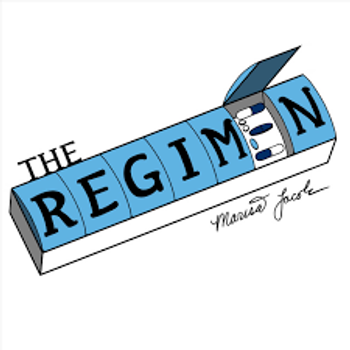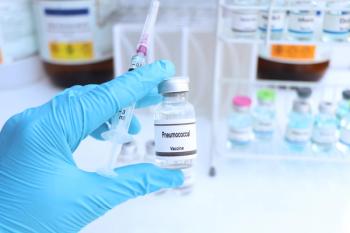
Medicinal Plant Extracts Could Combat UV Skin Damage
Researchers explored a variety of medicinal plants used for skin-related conditions and assessed their efficacy in treating UV-induced skin damage.
The integration of medicinal plant extracts with advanced drug delivery presents a significant opportunity for reducing UV-induced skin damage, according to a study published in the International Journal of Molecular Sciences.1
“Medicinal plants have a significant potential for treating a variety of skin disorders, serving as an excellent source of active compounds,” wrote authors of a study published in JID Innovations.2 “Advances in understanding the mechanistic basis of action for plant-derived natural products as well as new developments in the fields of bioinformatics and network pharmacology will further enable the discovery of novel bioactive small molecules of pharmaceutical interest in the future.”
Despite plant extracts being used as medicine for thousands of years throughout history, the general public is typically unaware of their use in today’s advanced treatment regimens. In fact, plant extracts were used by Egyptians specifically to combat ultraviolet (UV) rays in 5000 BC.1
READ MORE:
While thousands of years of evidence exists regarding plants and their use against UV damage, researchers wanted to get a better understanding of the specific plant extracts best used against UV light. Although medical technology has advanced throughout this time period, the plant extracts that were previously common in medical remedies have now been integrated.
“By the end of the 20th century, medicinal plant extracts had also begun to integrate with modern technologies, gaining extensive use in skin repair research,” wrote authors of the study.1 “In recent years, emerging therapies, including nanotherapy, stem cell exosome therapy, 3D bioprinting, and cold plasma therapy, have also found increasing applications in repairing skin damage.”
Their goal was to identify medicinal plants used widespread for treating UV-induced skin damage and present their efficacy in improving patient outcomes.
They conducted a systematic review and identified a total of 18 plants. The scientific names for those plants were Salvia miltiorrhiza, Panax notoginseng, Astragalus membranaceus, Andrographis paniculata, Paeonia lactiflora, Panax ginseng, Scutellaria baicalensis, Rhodiola rosea, Tripterygium wilfordii, Paeonia suffruticosa, Centella asiatica, Arctium lappa, Aloe vera, Sophora flavescens, Saussurea, Houttuynia cordata, Malus baccata, and Lonicera japonica.
These plants “were selected based on their established use in traditional medicine and proven efficacy in treating UV-induced skin damage.” The compounds in these plants have exhibited antioxidant, anti-inflammatory, and DNA repair properties in preclinical studies.1
“Prolonged exposure to UVA and UVB radiation can cause various types of skin damage, including sunburn, skin ulcers, photoaging, and even skin cancer,” continued the authors.1 “Each type presents distinct symptoms and therapeutic needs, and medicinal plants have shown significant potential in alleviating these skin issues."
With the plant molecules proven to be useful against a variety of symptoms impacting the skin, the researchers then explored the therapeutic application of the molecules through 3 specific strategies: exosomes, hydrogels, and nanoemulsions. Noted as cutting-edge strategies for improving UV-related skin damage, these 3 approaches showed potential for bridging the gap between identifying medicinal plants and applying them for medical use.
“These systems address critical challenges associated with conventional treatments, such as limited bioavailability, stability, and targeted delivery, by leveraging unique properties like nanoscale size, biocompatibility, and controlled release mechanisms,” they wrote.1
Exosomes are responsible for protecting and transporting molecules. They play an important role in cell communication and regeneration. They are also particularly common in human and plant cells, influencing physiological processes through both the plant and the body’s signaling pathways. The 2 types of exosomes explored with plant extracts have been exosomes directly isolated from plants or exosomes loaded with active plant ingredients.
For hydrogels, they play an active role in drug delivery. “By integrating medicinal plant extracts, hydrogels serve as a sustained-release drug delivery system, significantly enhancing drug targeting and therapeutic efficacy,” they continued. With the absorbent effects of hydrogels, they are able to either physically or chemically link to create a gel-like consistency that represents biological tissue, acting as carriers of plant extracts.
Finally, there are nanoemulsions, another therapeutic strategy for utilizing the drug delivery capabilities of plant extracts. “In the context of skin repair, nanoemulsions exhibit notable advantages in delivering medicinal plant extracts due to their controlled release and enhanced penetration capabilities,” wrote the authors.1
From the specific plant extracts to the methods of facilitating their use, the evidence of their efficacy in treating UV skin damage is notable. Several advancements have led to a gradual combination of plants and medicine in this area of skin damage. The key properties owing to these plants’ efficacy are low toxicity, abundant availability, and unique therapeutic characteristics.
However, there are several challenges researchers must overcome to bridge the gap between plant extracts and treatments for UV-induced skin damage. Study authors listed challenges including quality control standards, bridging the research and clinical application gap, integration of drug technology, in-depth research on plant-derived exosomes, and more.
“In summary, the integration of medicinal plants with advanced drug delivery systems represents a cutting-edge approach to combating UV-induced skin damage,” concluded the authors.1 “Future multidisciplinary studies focusing on molecular targets and therapeutic mechanisms, while refining delivery technologies, are expected to expedite the development of medicinal plants into innovative therapeutic agents, opening up new horizons for managing skin-related diseases.”
READ MORE:
Pharmacy practice is always changing. Stay ahead of the curve: Sign up for our
References
1. Zhao C, Wu S, Wang H. Medicinal plant extracts targeting UV-induced skin damage: molecular mechanisms and therapeutic potential. Int J Mol Sci. 2025 Mar 4;26(5):2278. doi: 10.3390/ijms26052278.
2. Israyilova A, Peykova TZ, Kittleson B, et al. From plant to patient: A historical perspective and review of selected medicinal plants in dermatology. JID Innovations. 2024;5(1):100321. https://doi.org/10.1016/j.xjidi.2024.100321
Newsletter
Pharmacy practice is always changing. Stay ahead of the curve with the Drug Topics newsletter and get the latest drug information, industry trends, and patient care tips.






































































































































